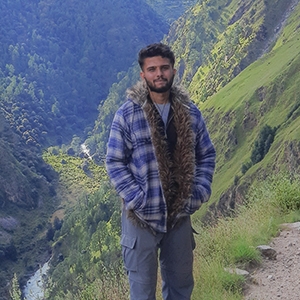Introduction of Langtang Valley Trek
This trek is considered the easiest and finest trek in the country. Looping towards charming mountain villages, various vegetation, variations of climatic conditions, and the challenging and inspiring experience of walking is a perfect activity in the Langtang Region. Situated in the North, towards Tibet, Langtang is a good trek offering breathtaking views of mountains and authentic local lifestyles. This is a culturally rich trek highly charmed by Tibetan traditions.
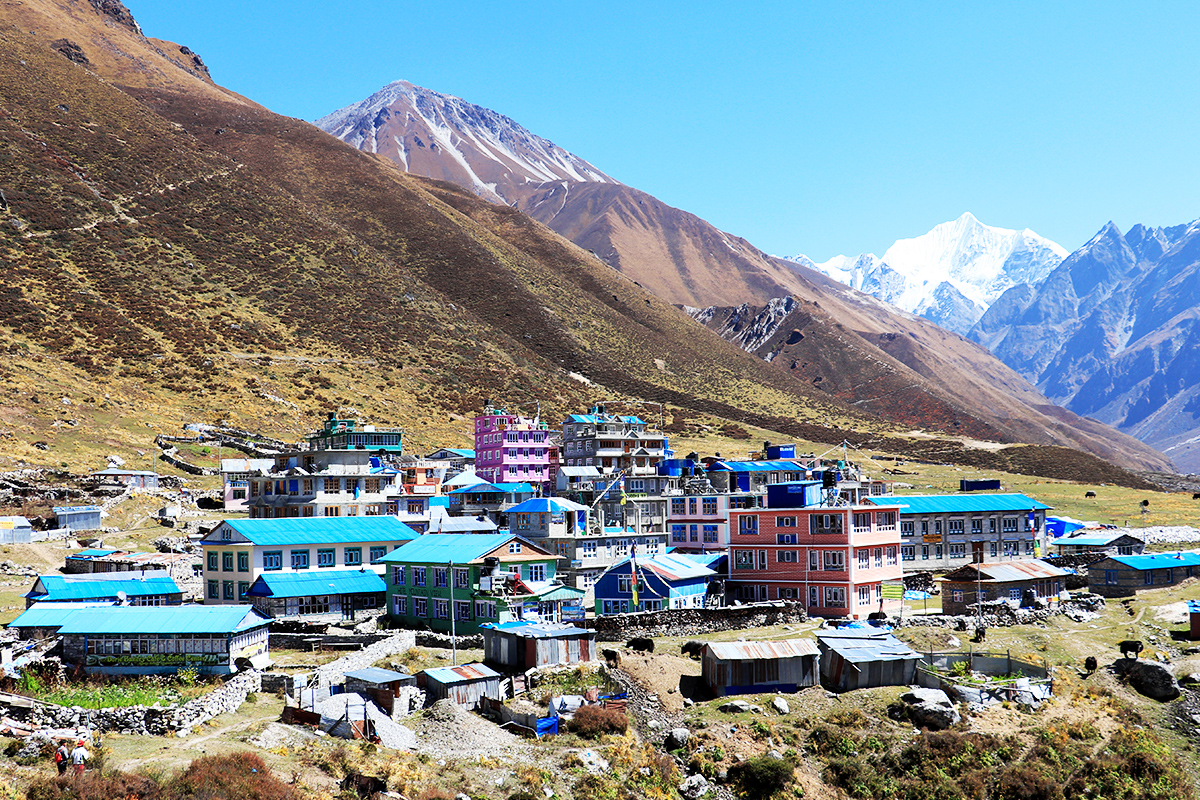
Before the earthquake in 2015, this was one of Nepal’s most famous trekking routes. Now, the trials have been repaired and trekking lodges reconstructed. And despite the damage, this is still one of the most beautiful walks in Nepal. The standard route follows the Langtang river up a narrow valley. On day two the final passes over the Langtang village and on day three the valley opens out to arrive at Kyanjin Gompa. This trek offers stunning views of Langtang Lirung (7,246 m), Langtang II (6,581 m), Mount Gangechempo (6,387 m), and other beautiful peaks.
Most people return back the way they came but if there is more time, it is possible to link up with the Gosaikunda and Helambu Treks. The trek starts and finishes in Syabrubesi, a small town 120km from Kathmandu. There is no airport in the area; the road is the only way of contacting Syabrubesi. The road is in inadequate conditions, partly gravel, with ongoing road works, buses drive very sluggishly, stop a lot on the way, and people get in and out – a typical bus ride in Nepal.
The bus costs NPR 750/US$7 per person one way. It takes between 7 and 9 hours. Buses leave daily between 6 am and 8 am from New Bus Station ( In Google Maps it is marked as Machha Pokhari microbus stop). Buses make at least two long toilet/food stops where you can buy water and snacks. You can also reach Syabrubeshi via a reserved four-wheeler.
Highlights of Langtang Valley Trek
- A scenic jeep/bus ride from Kathmandu to Rasuwa, Syabrubesi
- The trailhead can be reached by jeep so there is no need to pay for expensive domestic flights
- Teahouses in each village along the way so each night you get a great sleep in a bed with warm blankets, eat organic meals in a restaurant, have access to showers, and can charge your electronic gadgets
- Explore the Tibetan-influenced culture and lifestyles of the local community
- An astonishing walk through the bank of Langtang River, crossing different villages sparking their own beauty and importance
- Explore the wide range of flora and fauna
- Trek inside the Langtang National Park, which is a privilege to encounter the diversity of nature and local lifestyles
- Encounter breath-taking views of mountain peaks such as Dorje Lakpa, Yala Peak, Langtang Lirung, Langtang Ri, and many more
- You can witness the area which was badly hit by the massive earthquake in 2015 but you’ll get good facilities now in the reestablished hotels, lodges and tea houses
- Explore the oldest Buddhist monastery in Kyanjin Gompa and visit the famous cheese factory over there
- Amazing panoramic view from the highest elevation of the trek (Kyanjin Ri)
- Home to endangered species such as Red Pandas and Snow Leopards
- Diverse 18 different ecosystems of Langtang National Park
- Langtang National Park is home to 46 species of mammals, 30 species of fish, 70 species of butterflies, and 34 species of birds

How long is the Langtang Valley Trek?
Generally, this wonderful trek takes eight days to get completed and covers a total distance of 77km depending upon the fitness level of the trekker, rest day, and weather. On day 2, you will start your trek from Syabrubesi to the Lama hotel. On day 5 you will reach your final destination with maximum elevation. On day 6, you will follow the same route while descending. You can also trek back to Kathmandu via the Gosaikunda-Helambu route. Typically, on your 8th day, you can drive back from Syabrubesi to Kathmandu.
Normal Itinerary for the Langtang Valley Trek
- Day 1: Drive from Kathmandu to Syabrubesi (1,550m) - 7 hours
- Day 2: Syabrubesi to Lama Hotel (2,380m) - 6 hours
- Day 3: Lama Hotel to Mundu via Langtang Village (3,430) - 6 hours
- Day 4: Mundu to Kyanjin Gompa (3,870m) - 3 hours
- Day 5: Kyanjin Gompa to Tserko Ri to Kyanjin Gompa (5,000m) - 7 hours
- Day 6: Kyanjin Gompa to Lama Hotel (2,380m) - 6 hours
- Day 7: Lama Hotel to Syabrubesi (1,550m) - 6 hours
- Day 8: Drive from Syabrubesi to Kathmandu - 7 hours
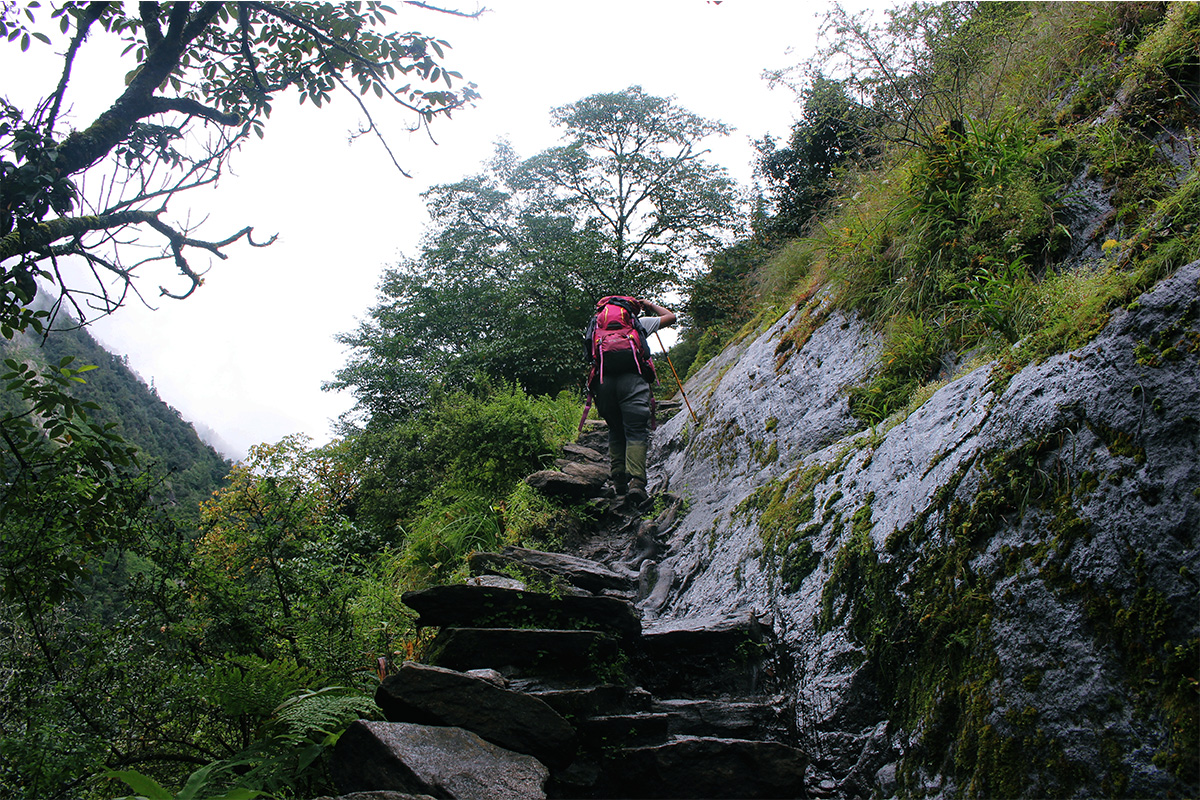
Is Langtang Valley Trek difficult?
This pristine trek is also often considered the acclimatization trek before you head to big treks such as Manaslu Circuit Trek and Everest Region trek. The trek is quite demanding due to elevation gain, in the foremost two days you reach over 2,000m up, and there are many abrupt and long ascents on the route. Till day 3 the trail goes through lush forests with an adequate amount of climbing routine. From day 4, you will be at the height of 3,870 m which can be challenging for newbies. If you have prepared well and you are physically fit, you can push for the morning hike to Kyanjin Ri on day 5. Only on day 4, the trek will be of 3 hours. Other than that trekkers must be able to walk around 6-7 hours every day with their light backpacks. The Langtang Valley Trek is much quicker than Everest Base Camp or the Annapurna Circuit although relatively similar. You will reach an altitude of 5,000m, which will challenge many. Altitude malady can be common. The route ascends quite quickly with several days having more than 1000m of altitude gain. These days of ascent are tiring and require the body to adapt quickly. It is a good novice trek in Nepal but not one to be endured lightly. Overall, the hardship level of this trek is considered moderate. Stay hydrated and eat enough warm meals to dodge the prompt weariness in the mountains.
How much does it cost to go to the Langtang Valley Trek?
There are bunches of elements behind the cost of the trek. The normal estimated cost for the Langtang Valley Trek is between 800$-1200$, which includes vehicles, trekking permits, a full board meal (breakfast, lunch, and dinner), a proficient guide, porters, accommodations, and a certificate of completion of the journey. Huge discounts are made if you travel in groups and our fixed departures.
Langtang valley trek costs highly if you're traveling privately or in a group. Traveling in a group can be more reasonable as you will share trek leaders and porters, whereas private treks are tailored as per essentials. In general, the Langtang trek is one of the most cost-friendly but worth investing in trekking routes in Nepal.
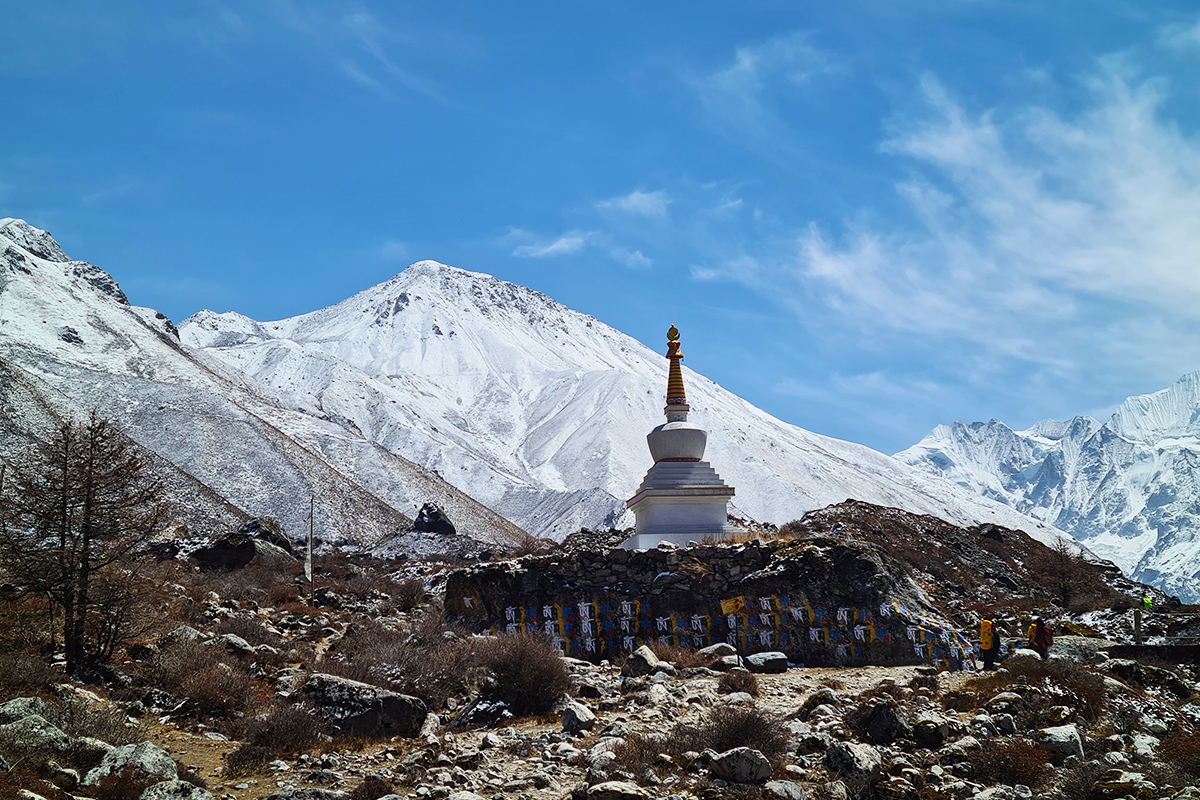
Is the trek to Langtang Valley dangerous?
The highest altitude of the trek is almost 5,000m and some people might get altitude sickness there. Other than that, if you are with a guide there is no need to worry about anything related to altitude sickness. You just need to be a responsible trekker and enjoy your trek. Besides that, bad weather during the monsoon can really make this trek perilous. Try to cross the forest areas before sunset to avoid wild snags. There are no serious reports of people missing on this trek as the trail is well marked and safe to walk. The dangerous side of this trek can be a natural disaster such as landslides, stones falling on some parts, attacks from wild animals and you may get lost in the forest. But, when you are with a trekking crew, they know such places, they will remind you to be more careful in such an area. After the brutal earthquake in 2015, the route was closed by Nepal Government, but now the route has been completely changed and re-opened for trekking and is much safer trekking. The only danger to you will be if you don't listen to the advice of your guide or wander off alone.
What is the best season for Langtang Valley Trek?
During the winter from December to February, this region gets very cold and there will be snow cover in the higher elevation of the Langtang region. Many of the lodges actually close up for the winter and re-open in late February to March. The prime season for the Langtang Valley Trek is March to May and October to December. In these seasons the atmosphere will be much clearer offering the glorious views of nature and the mountain peaks. The time to sidestep this trek is during the rainy season from June to August. But, towards the end of the monsoon, the greenery flourishes. Nature becomes more active and wild animals will start to appear near the villages, trekking trails, and open spaces. So, if you are a photographer or a botanist, you will enjoy your summer trek in the Langtang valley.
How cold is the Langtang Valley Trek?
The weather on this trek varies according to the seasons you are choosing for this trip. During spring, days are long and warm. The daytime temperature ranges between 10°C to 20°C during spring. Nights are a bit cold during this season.
Autumn is the most perfect season for trekking in Nepal. The weather is amazing during the autumn season. The days are nice and sunny but it gets cold around 5°C at night time.
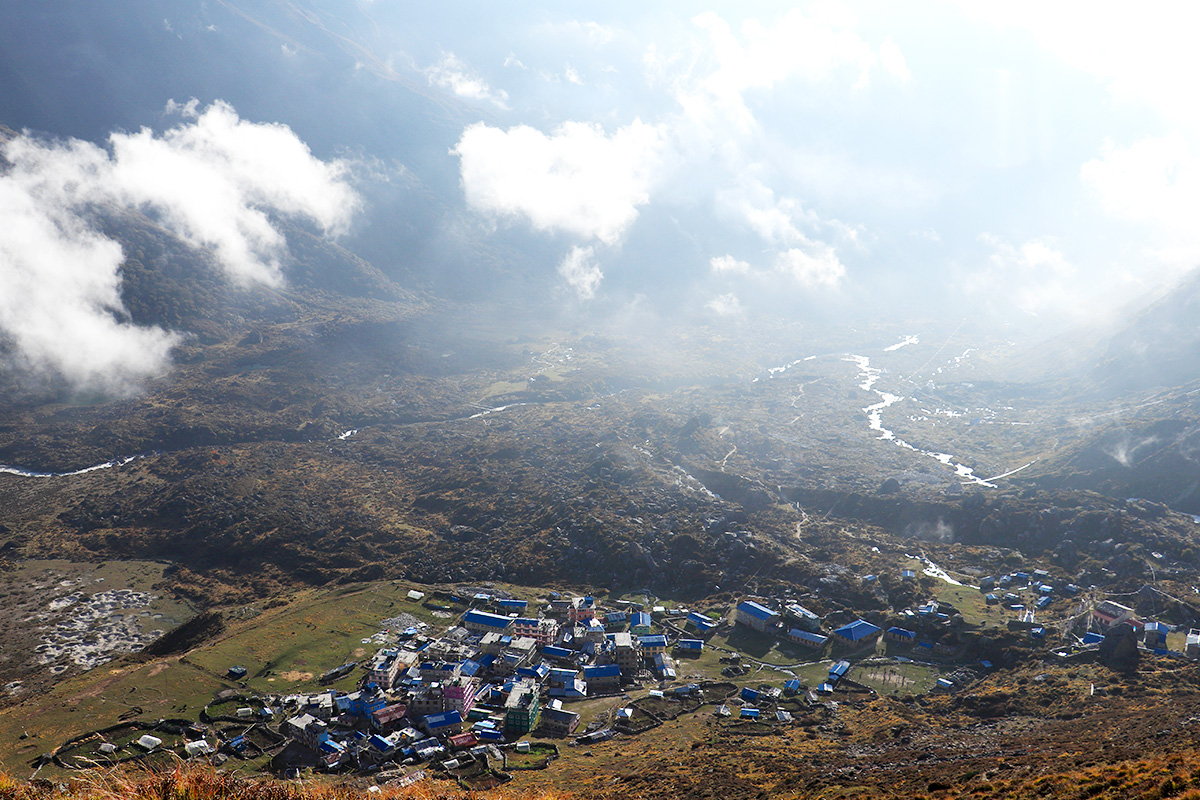
The weather from December-February is cold and is considered the winter season. During the daytime, the temperature ranges between 6°C to 9°C and drops below 0°C at night. The lowest temperature is -5°C in January.
During summer, the weather will be hot with a temperature higher than 30°C. In July, the average temperature is 12°C. Monsoon also enters Nepal in this season. It is hot but when it rains the temperature drops down and makes the trail slippery.
What is the accommodation facility in Langtang Valley Trek?
Guest Houses, also known as tea houses, are available along the way where you will sleep in a comfortable bed and have access to showers (which take an extra charge) and restaurant facilities. Normally, in Syabrubesi you can find some luxury hotels and guest houses. Afterward, the living places will be on a normal sharing basis, but every teahouse offers the best services per altitude and remoteness. You can get beautiful accommodation from Lama Hotel to Kyanjin Gompa. The rooms are designed with two single beds and small tables inside with an amazing mountain view from the window. The lodges will provide you with good bed sheets, mattresses, blankets, and a pillow for your comfort. Here, some lodges have rooms with an attached toilet, some have shared facilities, it might be a Western sit-down toilet or an Asian hole toilet. In the case of a hot shower, it’s a solar shower if it’s cloudy it doesn’t get hot. Sometimes it’s a bucket shower, you buy a big bucket of hot water, NPR 200 (one bucket is enough for two people).
What are the food and water facilities in Langtang Valley Trek?
From traditional Nepalese food and Tibetan dishes to a few international dishes, you can easily find them on the menu. Food is one of the major expenses on the trek. The higher you go the more expensive it gets as there is no road, everything is carried up by porters, donkeys, or helicopters. The average price for a meal is about NPR 500-700. It might be Soup, momos, porridge, Dal Bhat, etc. Prices vary depending on what you order. Tea and coffee are between NPR 100-200 and normal snacks such as cold drinks, chocolate, and chips, cost NPR 250. On this trek, you can get fresh bakeries, organic cheese, fresh cakes, and tasty muffins. They serve vegan meals, and gluten-free meals as well if you are required to. For these things, you should pre-inform your trek guide, so that they will ask the lodges to do so.
For drinking water, a hard bottle is recommended. You can get water from local lodges and shops and also can fill up them in local taps along the route. You can also carry a water purifier with you and can use it if you are drinking water directly from a tap or other sources.
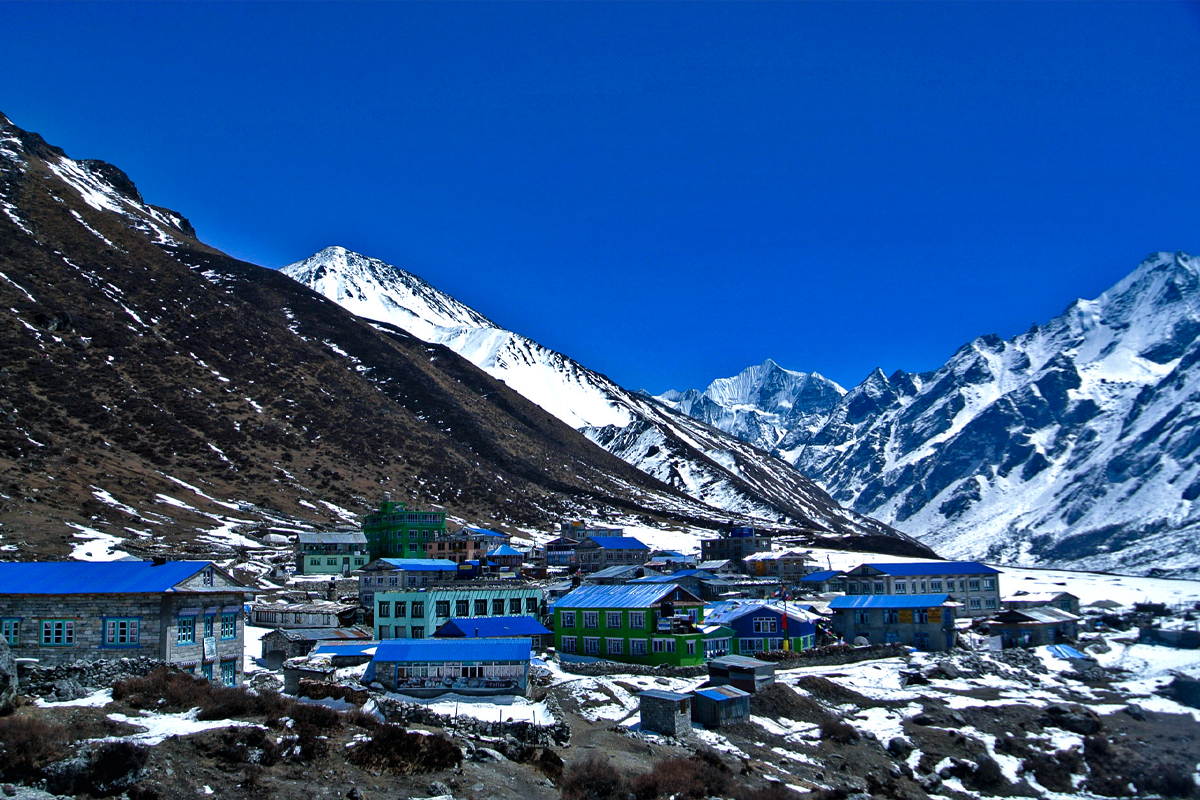
Entrance and Permits for the Langtang Valley Trek
You will need a TIMS card and National Park Entrance Permit for Langtang Valley Trek, both can be purchased when entering the park. If you are traveling through the trekking agency, they will handle all the permit purchases. But for single travelers, once you reach the national park entry point you can get your permits from there. You don't need any restricted area permits for this trek.
Permit for SAARC Countries
- National Park Entrance Fee: Rs 600/-
- TIMS Card Fee: 20USD for solo travelers and 10USD for group trekkers
Permit for Other Countries
- National Park Entrance Fee: Rs 3000 (26USD)
- TIMS Card Fee: 20USD for solo traveler and 10USD for group trekkers
Both Langtang National Park entrance permit and TIMS card are valid for single entry to the region and you must carry both permits during the entire trek. These entry permits are non-refundable and non-transferable. These permits can be made in TAAN Office and Nepal Tourism Board office in Kathmandu. Also, you can get the permits and entrance in the Syabrubesi office as well. If you are traveling with the local travel agency, they will get all the necessary permits for your trekking.
Travel Insurance for the Langtang Valley Trek
The Langtang Valley Trek is a moderately graded high-altitude trek through remote areas of Nepal. It is recommended to have good travel insurance if something goes wrong. Travel insurance is one of the most needed documents for trekking in the high mountains all over Nepal. During the trek you have to pass the narrow trails, steep up and down, crossing the dense forest, and landslides area. So, if travelers, unfortunately, face any kinds of consequences while trekking in such a situation, the insurance policy would be perfect for you. It saves you from paying a huge amount at once. So, we recommend that all adventure seekers and trekking enthusiasts get the proper insurance policy that covers all the rescue and evacuation costs for the high mountain. While purchasing an insurance policy, make sure that your policy also covers emergency helicopter evacuation, and medical expenses and that policy covers at least 5,500m altitude.
Is a solo trip possible on Langtang Valley Trek?
We'd recommend a solo trip only if you have good knowledge of maps and directions, and have done a solo trek before in high mountains. You can find a few solo travelers on the route heading to their final destination. The trek duration of this trek is shorter than other famous treks of Nepal. The higher you go, the villages become, forest trails will come, several small paths will be there and if anything will happen you will be alone on the way. Trekking in a group or with a guide may be hectic and you won’t like it sometimes to walk with people but it’s the safest way in the mountains. You may face the problems of acute mountain sickness, normal injuries, other illnesses, and any kind of casual consequences. For such a situation, your team, and your guide will help you to take the necessary precautions that ultimately help you to reach your destination. Besides this, local guides are also aware of the trails, and situations, give you an idea of the daily walking distance, time, and condition of the trekking trails, and also explain to you what you can see and explore during your entire trek. They will also explain the culture of that region, mountains, information about the Himalayan climate, landscapes along with the people and their traditions and rituals. These are the necessary things that you must know before you hike up to the Langtang region. If you are well known and aware of such things and if you’ve prior experience of doing the solo trek, then you can plan for it also. Otherwise, we highly recommend traveling with a guide and local travel agency for your smooth and pleasant trek in the Himalayas of Nepal.
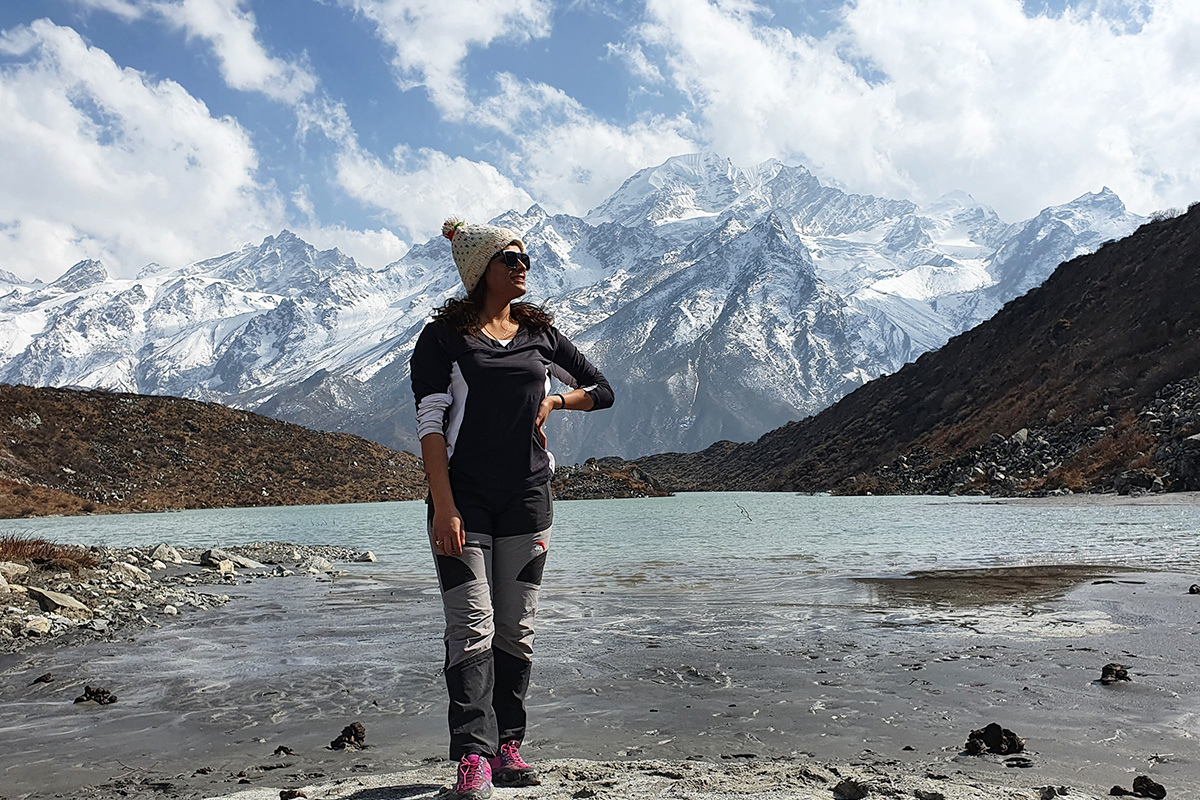
What is the facility of internet, electricity and mobile network?
The Langtang trek is one of the shorter trekking routes in Nepal. The wifi will cost anywhere from free to $4 to use wifi at the lodges. For an adequate mobile network, buy an NTC Simcard before you leave for the trek. It will operate in almost every area of the trek after Lama Hotel. This mobile network will let you watch Youtube, send emails and text your friends from Langtang village and Kyanjin Gompa as well.
Electricity is free at lower elevations and it will cost around $5 to charge your phone, power bank, and cameras. It is highly recommended to carry your power bank for the ultimate backup in this region. Most of the places will allow you to charge your gadgets for free but when it is busy they usually demand a fee as many guest houses run off solar or gas.
What to pack during your Langtang Valley trek?
Since Langtang Valley Trek is moderately graded trekking in the Langtang Region, make sure that you do not bring too much stuff especially if you’re planning to do it without a porter or even solo. Before booking the trip to Langtang, we provide the essential packing list for our customers. This means you don’t need that many things as you are going to stay in the tea house every night. Normally for clothing:
- A pair of the base layers, second layer, and outermost layer.
- A pair of hiking trousers and shorts.
- Light polyester trekking shirts.
- A waterproof shell jacket and raincoat are also helpful for you. Sometimes there might be chances of unexpected rainfall even in the normal trekking season.
- Required underwear and at least 4 pairs of socks.
- Gloves, hat, neck, and mount cover. So that you can save your face from the heavy wind.
- A pair of hiking shoes, sunglasses, a pair of sandals, a trekking bag, and your other regular medicine if you are taking any.
- Sleeping bag, toilet paper, towel, toothpaste, toothbrush, suncream, and hand sanitizer for your regular use.
- Also, the most useful thing is a water bottle and water purifier if you want to drink regular water.
Active Mountain Sickness & preventive measures
Generally, the range of this trek is moderate. So, there is less chance of getting altitude sickness, but be sure to take precautions while ascending to a higher altitude. If the symptoms of the illness are not taken care of properly, the situation can even turn crucial. That’s why we always suggest travelers trek with guides and local travel agencies.
Some Common Symptoms of AMS
- Headache ( both side and one side of the head)
- Loss of appetite
- Nausea and vomiting sometimes.
- Tiredness and dizziness.
- Feel discomfort while sleeping.
- Increase the heart rate and shortness of breathing.
Common Prevention
- Keep your body hydrated and drink at least 4-5 liters of water every day when you cross above 3,000m
- Take plenty of rest after finishing your daily hike.
- Consume enough food and calories while trekking.
- Wear enough and make your body warm.
- When you feel most of the AMS symptoms, descend to a lower altitude as soon as possible.
- Ascend slowly and acclimatize properly according to the needs of your body.
- Travel with a local guide and travel agency so that they will help you to trail for all the possible consequences.
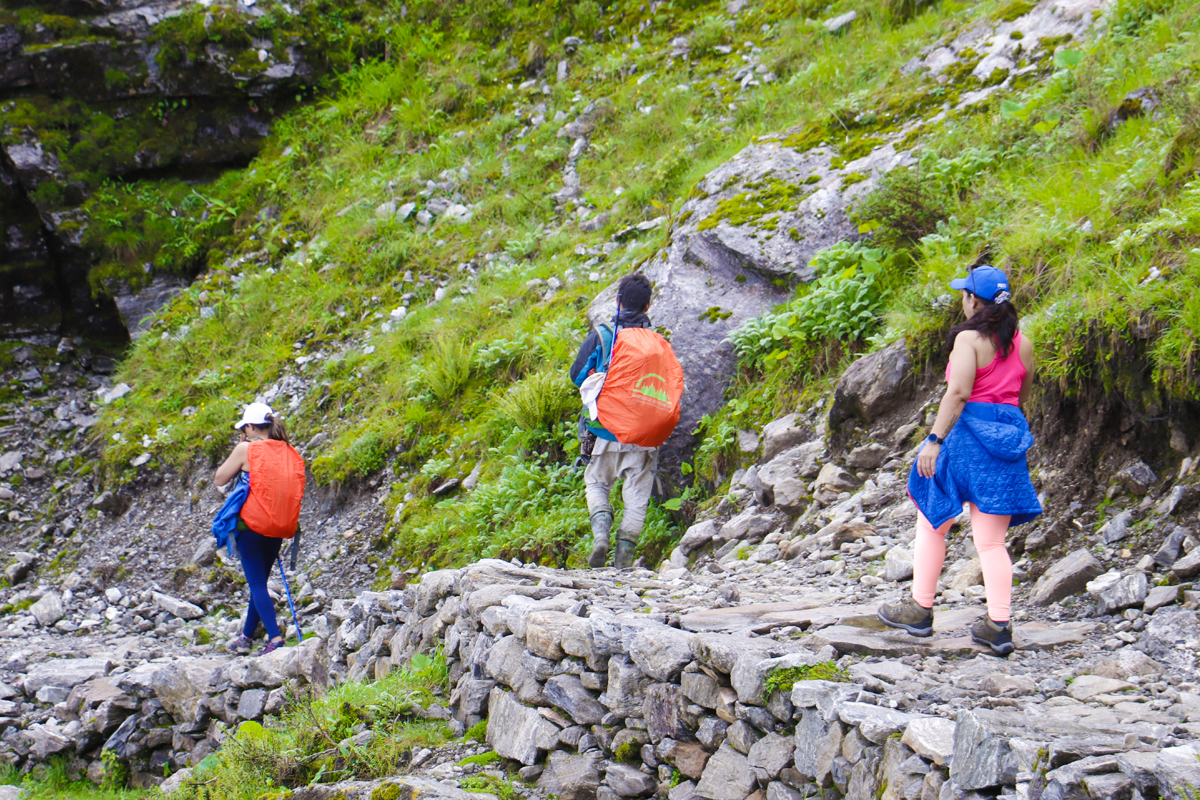
There are few medicines like Diamox that help to prevent sickness. But, remember one thing, before taking any drugs related to AMS consult with related doctors or medical experts.
This ultimate guidebook for the Langtang Valley Trek would be helpful for those who are planning a trip to Langtang Region soon. After the massive hit of the earthquake in 2015, this region is rebuilding and welcoming visitors every year with better hospitality. However, this guidebook is just a speck of what the Langtang Valley Trek entails. The eye-catching snow-capped mountains, landscapes, valleys, and wildlife will be a rewarding adventure during the trek.
Today, despite the road going up the Trishuli Valley all the way to Dhunche, the valley is still a rarely visited area. The Park has a comparable climatic pattern to Sagarmatha National Park, a popular national park in the lap of the Everest region, but the subtropical area to the south assures a wider mixture of animals, including musk deer, Himalayan black bears, the Himalayan Thar, langur monkeys, and the rare snow leopard and red pandas. Trees include oak, blue pine, birch, and maple, and in the springtime, the hillsides are fatty with rhododendron flowers. The valley also puffs several glacial lakes including Gosainkunda Lake which is godly to Hindus and a possible add-on to your trek if you have a few more days. There are also lots of very high specialized peaks and lower trekking peaks which can also be added to your itinerary.
For more details about the Langtang valley trek, please do contact us anytime. Hope this guidebook will guide you through little aspects of the Langtang Valley Trek and help you to prepare for the beautiful adventure of your life.










